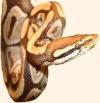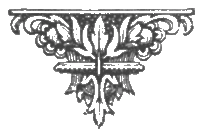
The Friendly Python
A Taste Of Programming
Mississippi College
Computer Science 114
The only way to learn about programming is to try it, and these lessons are here to help you do that. They are not designed to make you a programmer, any more that that an introductory biology lab aims to make you a doctor. They will help you understand something of what a programmer does, and what challenges are involved. Unlike introductory biology, we will not dissect a frog; we'll use a python instead. The Python programming language is relatively easy to learn, yet it is still a "real" language used at organizations you might have heard of, such as Google, Industrial Light and Magic, and NASA.
Five lessons, for your convenience. They generally build on each other, so you should probably take them in order. The first three are foundational, while the last two are more applied.
| Lesson 1: | The Expressive Python: Expressions and Variables. |
| Lesson 2: | The Python Files: Simple Programs. |
| Lesson 3: | The Python Under Control: Conditions, Loops and Functions. |
| Lesson 4: | The Seeing Python: Image Manipulation. |
| Lesson 5: | The Visible Python: Simple GUIs. |
These lessons are by no means a complete discussion of Python. If you would like to lean more, the official Python site is an excellent starting place. You can find extensive documentation, including tutorials, and also pick up a copy of the Python interpreter. It is free, and runs on many platforms.
Note: I recently re-arranged the lessons. The current Lesson 5 (GUI's) was previously four, and the previous five (images) has been modified to become Lesson 4. The new four covers the same image operations, but allows the students to create plug-ins rather than modify the main code body. This is supposed to simplify things, and allows images come before the GUIs. If you really want the old five, it's here.
Copyright 2005, 2006
Thomas W Bennet •
Image Credits
•
Terms of use:
Creative
Commons
